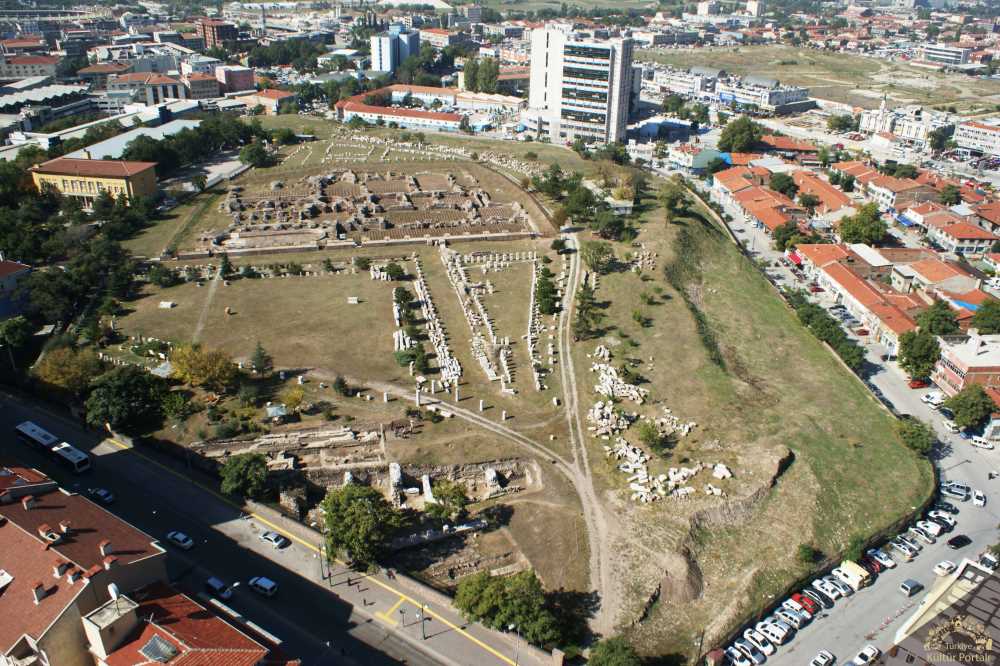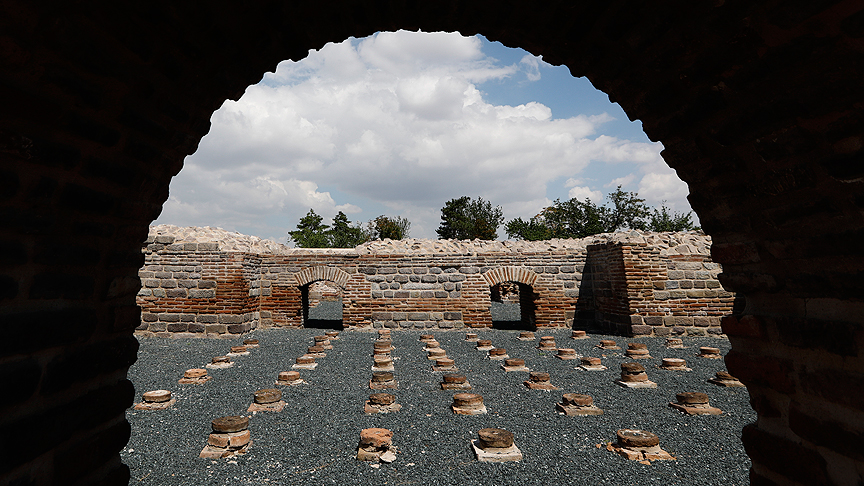The Roman Bath is an archaeological site located in the Ulus district of Ankara, Türkiye, on Çankırı Street. Positioned on a plateau approximately 2.5 meters high, this significant archaeological area dates back to the Roman period. It is a large bath complex built by Roman Emperor Caracalla (A.D. 212–217) in honor of the God of Health, Asclepius, and holds great historical and archaeological value. Settlement layers from the Phrygian, Roman, Byzantine, Seljuk, and Ottoman periods have been identified beneath the structure.

Roman Bath Archaeological Site (Türkiye Kültür Portalı)
History and Architecture
Constructed in the 3rd century A.D., the bath complex measures approximately 80 x 130 meters. Built of stone and brick, the structure consists of two main sections: the palaestra (a sports and physical training area) and the enclosed bath area. The palaestra is surrounded by a colonnaded portico with numerous inscribed columns. Water was supplied to the complex from Elmadağ, located about 40 kilometers away, using large stone blocks. During the Roman Empire, this site served as one of the largest baths in ancient Ankara.
Excavations and Archaeological Findings
The first excavations were conducted in 1937 by Prof. Dr. Remzi Oğuz Arık. Between 1939 and 1943, the entire bath structure was unearthed. Excavations carried out from 2007 to 2011 revealed the architectural layout of the colonnaded street and associated shops northeast of the palaestra. A large statue of a Roman emperor was also discovered during these excavations.

Roman Bath Archaeological Site (Anadolu Ajansı)
Open-Air Museum and Exhibited Artifacts
Between 1997 and 2001, the Roman Bath site was transformed into an open-air museum. Covering an area of approximately 65,000 square meters, the site displays around a thousand gravestones, inscriptions, and architectural fragments, mostly from the Roman and Byzantine periods. Gravestones are exhibited in the southern and western wings of the sports area; inscribed blocks, pedestals, and water pipes in the northern wing; altars and architectural pieces in the eastern wing; and sarcophagi and lion statues in the central area. The inscriptions provide insight into the social and cultural life of retired Roman soldiers who lived in ancient Ankara.

Roman Bath Archaeological Site (Anadolu Ajansı)
Preservation and Visitation
The Roman Bath Archaeological Site is protected under the supervision of the Museum of Anatolian Civilizations. It is open to visitors seven days a week. Restoration and landscaping efforts are ongoing, and various preservation measures are implemented to ensure the protection of the structure and the exhibited artifacts.


